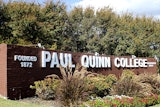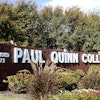2005: A Year In Review
Last year would close out with a natural disaster that was beyond anyone’s comprehension — a magnitude 9.3 earthquake unleashed a tsunami which traveled across the Indian Ocean, taking the lives of an estimated 250,000 people in Southeast Asia. The Asian tsunami would set the stage for the natural disasters which would occur in the New Year.
Probably the most reported and unforgettable story in 2005, in addition to the ongoing War in Iraq, was Hurricane Katrina, which devastated the Gulf Coast region of the United States at the end of August. The hurricane’s aftermath is still affecting the lives of hundreds of thousands of people. In the higher education community, thousands of students, faculty and staff had no schools to go back to when the storm was over. The three historically Black colleges in New Orleans — Dillard University, Southern University-New Orleans and Xavier University of Louisiana — were forced to shut down for at least the fall semester after suffering substantial damage to their respective campuses. They would also have to lay off some faculty and staff. As expected, the higher ed community stepped up, as many colleges and universities across the country opened their schools to both displaced students and faculty.
Earlier this fall, New Orleans universities Loyola and Tulane, which did not incur as much damage as the city’s three HBCUs, announced that students from Dillard and Xavier will be able to attend class and administrators from the two universities will share office space on the campuses of Loyola and Tulane. But the impact on Tulane would be felt as well, as the school announced cutbacks and faculty layoffs in December. Dropping five of its undergraduate programs and half of its doctoral programs, Tulane President Scott S. Cowen said, “This is the most significant reinvention of a university in the United States in over a century.” There’s no doubt that statement could apply to the other universities affected by the hurricane as well.
Speaking of reinvention, Black Issues In Higher Education magazine took on a new name in 2005 and expanded its editorial focus. The magazine, after 21 years in publication, debuted in August as Diverse: Issues In Higher Education. Said Bill Cox, president and CEO and one of the founders of Black Issues about the name change earlier this year, “It’s very difficult deciding to put aside [the name] Black Issues, but it’s time to look toward the future, and the future is a more diverse and inclusive society that’s not just Black and White.”
And as we gained a new name and hopefully some new readers, we remember the people we lost in 2005 — Ossie Davis, Johnnie Cochran, Kenneth Clark, Harold Cruse, Constance Baker Motley, C. Delores Tucker and Rosa Parks — just to name a few.
Though not an exhaustive list, the following pages include some significant events that occurred throughout the year.
In light of his comments regarding women in the sciences, Harvard President Lawrence Summers appoints two faculty task forces on women and pledges to create a senior administrative position to support gender diversity.
JPMorgan Chase & Co. is the first company to acknowledge that two of its predecessor banks had specific links to the slave trade. The filing was meant to comply with a Chicago ordinance, which requires such disclosures.
In a nationwide survey, students complain about the length of the new SAT.
Spelman College, in conjunction with Essence magazine, holds a weeklong event “Take Back the Music” to address the negative portrayal of Black women in hip-hop lyrics and videos. 4
After four decades of leading the national movement to improve higher education, the American Association for Higher Education ceases operations.
Dr. Johnnetta B. Cole decides to resign as president of Bennett College
but later withdraws her resignation following an outpouring of support. At a board of trustees meeting in April, Cole said a group of professors was attempting to throw a wrench into plans she had for the college. The board immediately rejected her decision to resign. 2
NCAA Division I board of directors approved a plan where college sports teams must stay on track to graduate at least 50 percent of their student-athletes to avoid the risk of losing scholarships and postseason opportunities for a year.
The Institute for Diversity and Ethics in Sport at the University of Central Florida dropped its grade for racial diversity in college sports from a B to a B- on its annual report card. The findings were released during the Black Coaches Association’s convention held in Indianapolis in June.
The Reginald F. Lewis Museum of Maryland African American History & Culture opens in Baltimore in June. 1
Columbia University announces the dedication of $15 million to jumpstart a new recruitment campaign and to accelerate other ongoing efforts to diversify its faculty.
On Oct. 15, 2005, crowds anywhere from 100,000 to one million
gathered on the National Mall in Washington, D.C., to celebrate the 10-year anniversary of the Million Man March and renew commitments to work toward positive change. 3
© Copyright 2005 by DiverseEducation.com


















